The Merits of a Twin Screw Vice
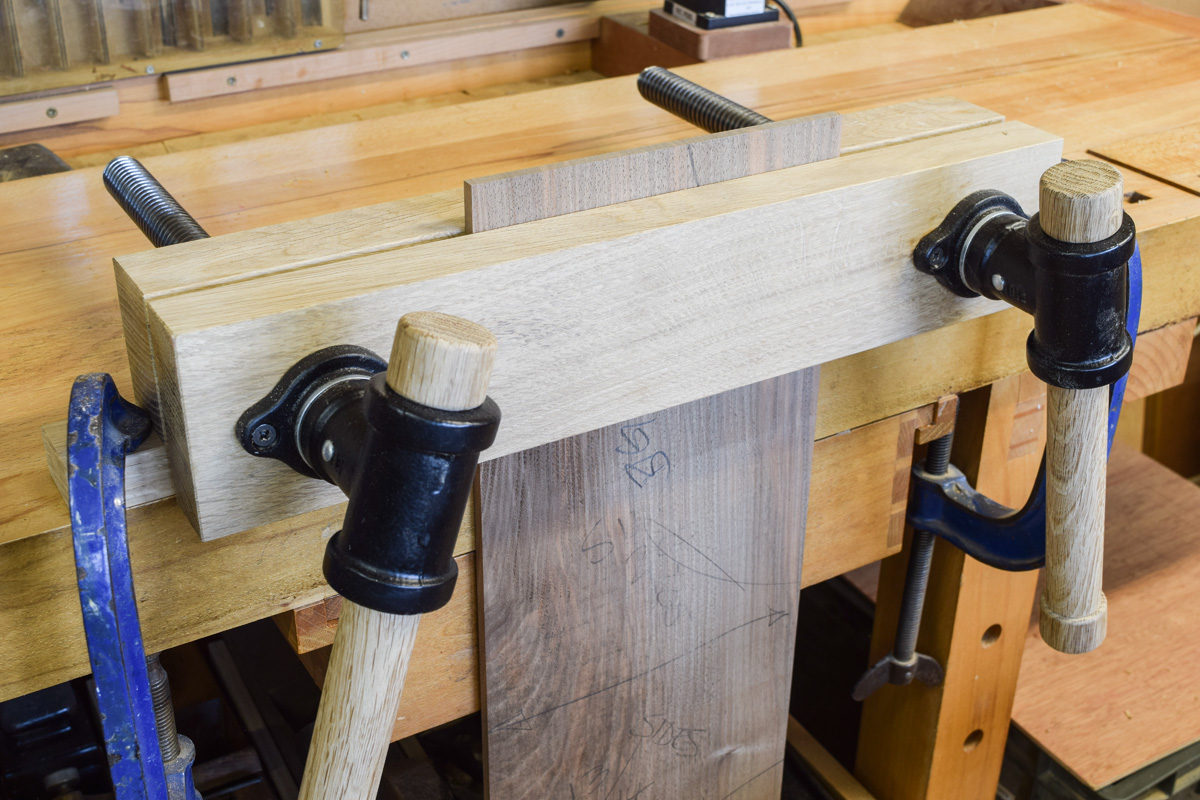
I always have one largish project on the go at any one time, together with one or two smaller ones; maybe a box or something similar. The current job is pretty big being a skeletal chest of drawers for my wife, loosely based on one designed by John Makepeace some years ago.
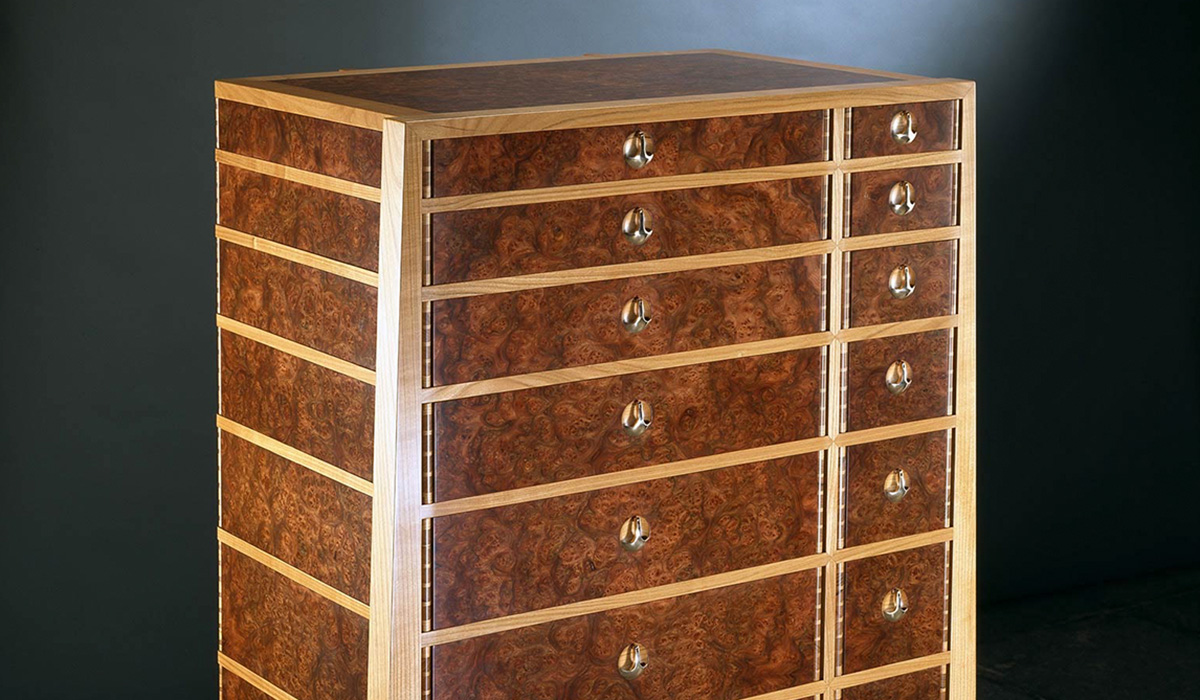
The one I’m making is the same size but will have fourteen drawers instead of the original’s eighteen, with English oak being used for the skeletal frame and walnut for the drawers. Having completed the frame, I’m now into the very long process of making the drawers and have made the boxes for the shallower ones at the top. As I work my weary way down, the drawers become progressively deeper so that although the top one is 97mm deep, the bottom is very nearly 200mm and they all have to be dovetailed at the corners.
Making the shallower drawers isn’t too much of an issue as the wood is held securely in a standard quick release (QR) vice so that it doesn’t flap about and vibrate too much. However, once the width of the drawer side starts to increase significantly the ‘outboard’ end isn’t held firmly and it becomes quite difficult to clamp in place using small battens of gash timber.

Some weeks ago, I’d seen what I thought might promise to be the solution to this problem; in other words a purpose-made twin screw vice, specifically built to hold wider pieces of material. At the time I thought this was a ‘good thing’ and logged it away at the back of mind (as you do) ready for the day when I might need such a device.
The day dawned sooner than I anticipated!
Scouting through t’interweb, I soon came across another supplier in the UK who sold the particular set of components with which to build a twin screw vice. What wasn’t quite so enthralling was the price tag...£162!
Being a poor, hard up pensioner (!) there was no way I that I was going to dispose of my hard earned shekels like that and I thought that we at Axminster must be able to offer a viable alternative at a fraction of the cost.
Trawling through our site, I came across the York Universal Vice Screw, a pair of which I thought would make a pretty robust and very substantial twin screw vice. My design was essentially very simple; a chunky rear block with a couple of clamping blocks screwed in place and a slightly less chunky front cheek for the vice. Spacing the screw threads sufficiently far apart ought to give me a clamping capacity of around 300mm, which is more than adequate for most applications.
Luckily I also own one of our 1628VS lathes so it wasn’t a problem to make a pair of oak handles, but if I didn’t have the lathe, a pair of Veritas wooden handles could have been used instead.
The twin screw vice took around a day to build and was relatively easy with no real snags or complications. In use, it’s proved to be as secure as I initially thought it would be with even the widest board being held in a limpet like grip.

To see how it was built, follow the process in the ‘Step-by-Step’ article but in the meantime, if you have any queries, please leave a comment below and I’ll do my best to answer it.




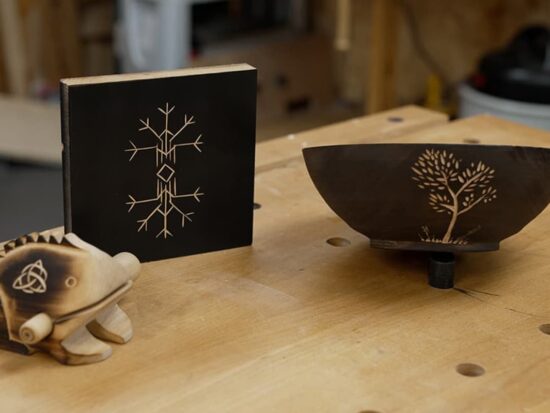
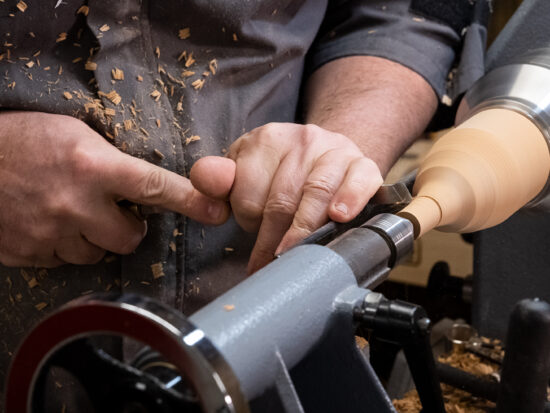
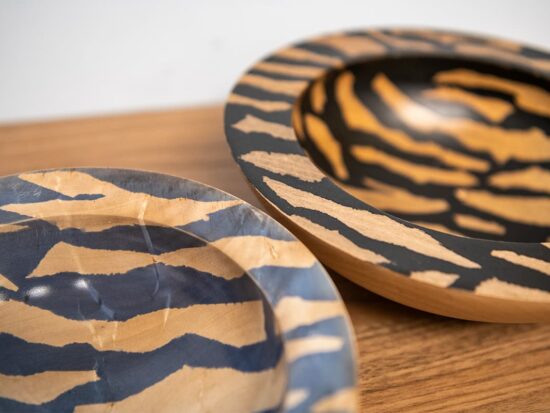
Wish I had read this before forking out more than two hundred quid with Axminster for the Veritas double screw vice. Though I must admit that the chain link on this is something that I may not be able to live without.
Good for Axminster for posting a blog about how not to buy a product they no doubt make some profit on ;-)